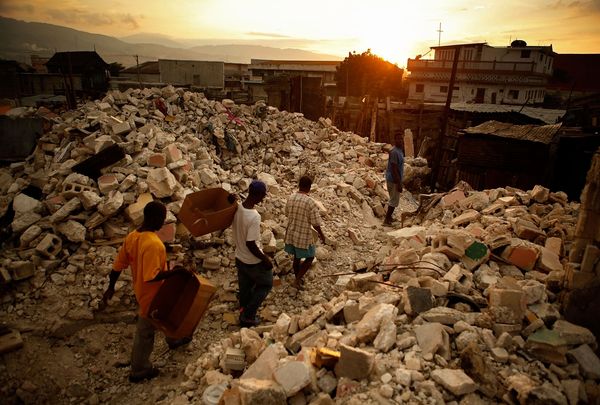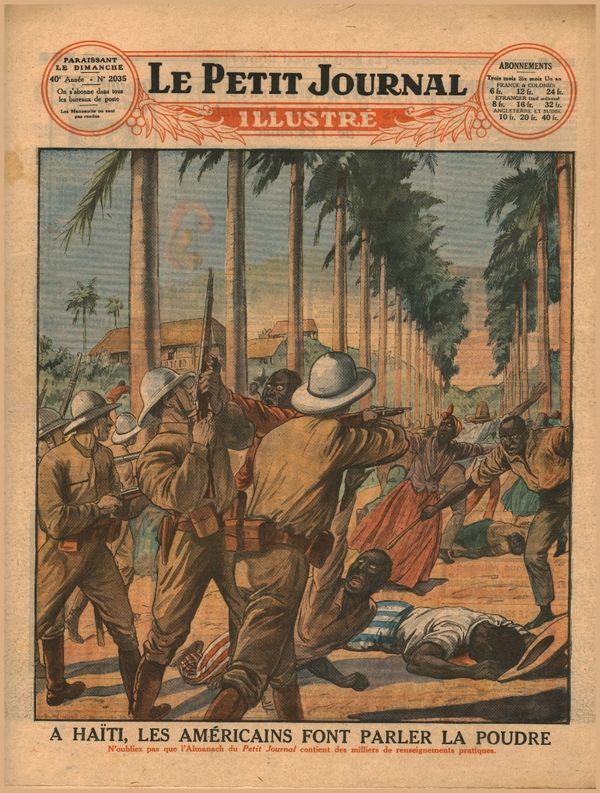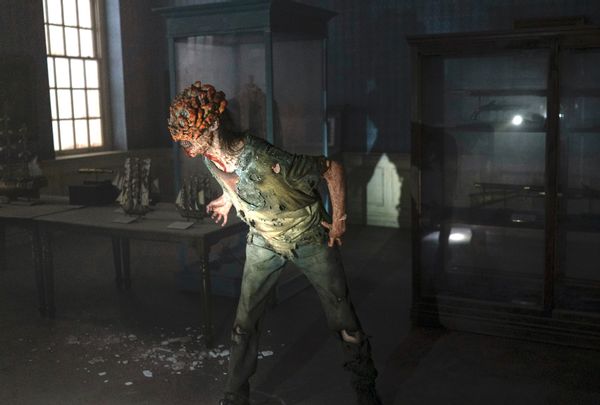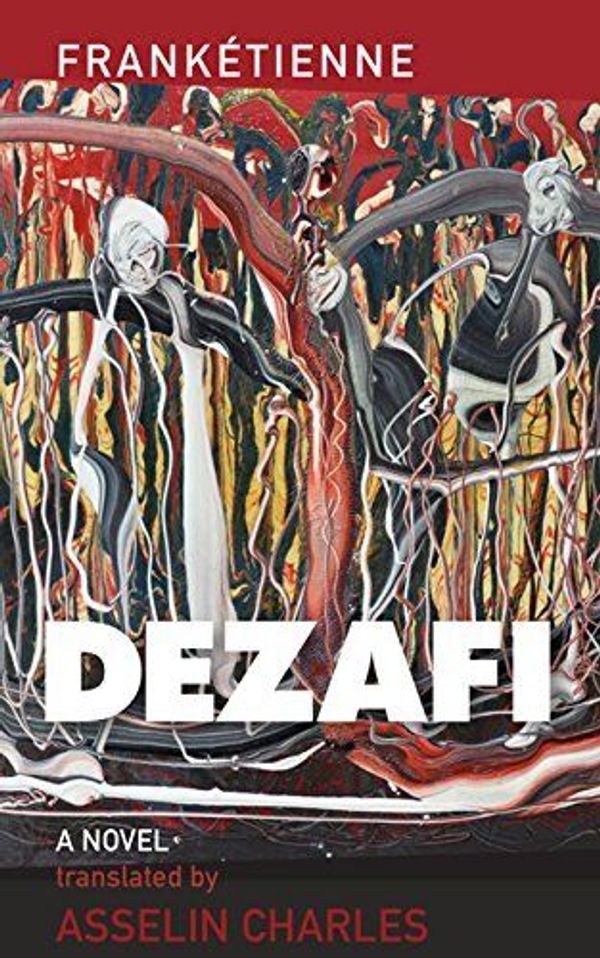
The distress of a loved one's body gone missing sits at the very center of Haitian folklore.
For many of Haiti's residents, mentions of the village Titanyen guide to mind the mass graves that, even now, collectively frustrate burial rites meant to aid and/or honor souls as they cut across into the next world. On Jan. 12, 2010, the Haitian capital city of Port-au-Prince was hit by a 7.0 magnitude quake that, all told, killed nearly 300,000 people. It struck in the afternoon while the sun was still propped up quite high in the sky. There were children playing in Port'Prince alleys. In Guantánamo, in Kingston, in Caracas, in Santo Domingo, seismographs registered the quake in mathematical figures while residents of each city felt the ground convulsing for themselves. For days after the quake, the earth near Titanyen was sifted and split for burial pits. Public health officials saw the mass burials as expedient, and necessary, modes of moving the bodies of the dead from Port-au-Prince before decay set in. Many of the deceased were moved before they could be identified by, or have their bodies retrieved by, their families.
For many of the Haitians who had lost loved ones to the quake, the pits were a profane compounding of their grief. In an NPR article published nearly a month after the quake, Haitian mortician Marc Arthur Alcero spoke about how few funerals he had conducted post-earthquake, and how the sparsity was quite disturbing considering the conviction with which the culture honors its dead: "[I've conducted] very few of them, about eight or nine. That is very, very hard situation for a Haitian to know his wife, his children is dead, and he cannot find the body." The distress of a loved one's body gone missing sits at the very center of Haitian folklore, and this lore, in turn, is an extension of a deeply personal cultural consciousness. Such distress is made particularly manifest in anxieties around one folklore staple – the zonbi, known most familiarly to Western audiences as the zombie.

The spiritual horror of the Haitian zonbi is that that control, when stripped, is reassigned to whoever has brought the zonbi back from its grave.
For those Haitians who fear it, the Haitian zonbi carries its grotesquerie two ways: 1) the abnormality of having been brought back from the dead, the very fact of having been returned, and 2) the violation of individual will as brought about by a person's compulsion into posthumous labor. This second form of grotesquerie, this violation of will, has historical heft that partially explains the cultural (meaning Haitian) terror of the zonbi. While the zonbi did, in the era of Haitian slavery, also place as a figure of revolutionary Black immortality that resisted the Black mortality and violent dispensability on which slavery insisted, the apprehension with which those around me approach/discuss/joke about/revile the zonbi is much more in line with this common cultural point reiterated by academic Jeffrey Jerome Cohen: "The folkloric zombie is a reduction of person to body: an utterly dehumanized laborer, compelled relentlessly to toil, brutally subjugated even in death." This would have been, for the enslaved who shared and reshared this lore, a horror with a metaphysical grip: the notion that they were subject to a second iteration of the slavery that their death should have freed them from.
If the spiritual horror of the zombies in pop-culture juggernauts like AMC's "The Walking Dead" and critically acclaimed zom-edies like 2004's "Shaun of the Dead" is that the infected/afflicted have been stripped of their control over themselves, then the spiritual horror of the Haitian zonbi is that that control, when stripped, is reassigned to whoever has brought the zonbi back from its grave, or whoever has paid to have that zonbi "returned." There is something bitterly disturbing, too, about being turned into a labor-puppet when the pursuit of self-sovereignty in the face of enslavement has always been at the core of your country's national ethos. Such considerations provide essential context for the way that the zonbi weighs on the psyche of every Haitian person who believes in its existence. Their concern is real, their anxiety potent, because the aforementioned reanimation is a material possibility with the same authority of other dangers –men with machetes, cancer, drowning at sea.

By the time that Seabrook published his "firsthand account of voodoo in Haiti," the othering of Haiti, and its Afrocentric vodou religion in particular, had been long underway. Consequently, the social milieu in which many white Americans existed at this time all but guaranteed that the Haitian zombie would become an additional agent for this othering, further estranging Haiti, its people, its lore and the culture from which that lore sprung, from bigoted American conceptions of "civilization" and valuable tradition. The zombie, then, entered a cultural atmosphere already primed to look down on the particular, culturally specific existential fear it generated for Haitians.
To its credit, Seabrook's book – billed as part-anthropological study, part-Caribbean travelog – keeps zombie lore attached to its Afro-Haitian context. For all that it exoticizes Haiti as a place full of "dark, mysterious" jungle mountains over whose slopes "the steady boom of Voodoo drums" could be heard (even now, these lines make me laugh), even Seabrook positions the zombie as a particularly Black and Haitian phenomenon: "It seems to me that these [Haitian] werewolves and vampires are first cousins to those we have at home, but I have never, except in Haiti, heard of anything like zombies."

Once it became clear that the zombie could be detached from Haitian origin – excised, unclipped – it then became a sort of mythic free agent.
It seems to me that the true detachment of Haitian origin from zombie lore – within the realm of American pop-culture – began with the release of the film "White Zombie" in 1932, a movie whose screenplay was largely based on Seabrook's "Magic Island." In "White Zombie," a white American woman named Madeleine Short (Madge Bellamy) arrives in Port-au-Prince with her fiance Neil Parker (John Harron); they are to be married on the wealthy Charles Beaumont's (Robert Frazer) plantation estate, but Beaumont, developing an obsessive sexual and romantic fixation on Madeleine, enlists the help of "Murder" Legendre (Bela Lugosi), a white plantation owner who moonlights as an evil "voodoo" sorcerer, to turn Madeleine into a zombie who will be forever subject to Beaumont's whim.
On the one hand, Madeleine's fate in "White Zombie" is a fascinating transposition of the era's particular and violently racist infatuation with "protecting" the innocence of white women and girls from the "Black male predator," only this time, nonhuman aspects of "Blackness" – the "black magic voodoo" that white, French-descended Legendre practices, as well as the broader context of Haiti as a Black nation wherein zombification is possible at all – are blamed for the assault.
On the other hand, "White Zombie" drastically de-emphasizes the zombie as a particularly Black phenomenon and repurposes it to explore and indulge and ultimately condemn violent intra-racial gender dynamics. "White Zombie" is ultimately about how white men harm white women, how white people harm white people. In this way, "White Zombie" turns the zombie into a locale of white victimhood.
With this spinning of zombie lore, zombification became something that could happen to white people; if not in actuality – as the zombie remained and remains a figure of fantasy for many Americans – then metaphorically or imaginatively. This was absolutely crucial for the growth of zombie media away from the Haitian zonbi. Once it became clear that the zombie could be detached from Haitian origin – excised, unclipped – it then became a sort of mythic free agent onto which filmmakers, storytellers and videogame developers, among other creatives, could chart the social anxieties that preoccupied their own communities and intended audiences. The zombie is ambrosia for the mind of the horror-media buff: it possesses the visual and visceral spectacle of necrosis, the ever-present symbology of death, the excitement of the interminably strange.
Most frequently, the zombie of modern-day American media is a vector for societal collapse: this interconnection was popularized by Romero's 1968 classic "Night of the Living Dead" and, as proven by the gutted material and communal infrastructure of "The Last of Us," is still strongly present in popular zombie media over five decades later.


In 2009, the LGBTI theater troupe Lakou, based out of the southern Haitian city Jacmel, staged a production called "Zonbi, Zonbi," a queer retelling of the Haitian novel "Dezafi" where a zonbi is eventually restored to its humanity by consuming salted food. More than anything, this production situates the zonbi in an anti-colonial space also inhospitable to the homophobia with which colonialism has often been paired. According to performance studies scholar Diana Taylor (2003), "Zonbi, Zonbi" activates a repertoire, "an embodied performance of cultural memory." Haitian works like "Zonbi, Zonbi" should be watched closely by all interested in zombie lore, because they contend with the zonbi as it first appeared for the island's earliest Black inhabitants – as a heart thing, as a soul thing, as a scary thing, as a triumphant thing, as a specific thing, as a close, close thing.







